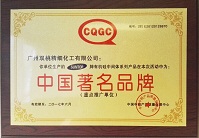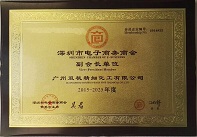
![]() E-mail: admin@gz-chemical.com
E-mail: admin@gz-chemical.com
Email us,best price and silane solutions for you!
Tel:+86 (20) 29035969

![]() E-mail: admin@gz-chemical.com
E-mail: admin@gz-chemical.com
Email us,best price and silane solutions for you!
Tel:+86 (20) 29035969


With an extremely fast "electron camera" at the Department of Energy's SLAC National
Accelerator Laboratory, researchers have made the first high-definition "movie" of ring-s
haped molecules breaking open in response to light. The results could further our
understanding of similar reactions with vital roles in chemistry, such as the production of
vitamin D in our bodies.
A previous molecular movie of the same reaction, produced with SLAC's Linac Coherent
Light Source (LCLS) X-ray laser, for the first time recorded the large structural changes
during the reaction. Now, making use of the lab's ultrafast electron diffraction (UED) instr
ument, these new results provide high-resolution details—showing, for instance, how a
bond in the ring breaks and atoms jiggle around for extended periods of time.
"The details of this ring-opening reaction have now been settled," said Thomas Wolf, a sc
ientist at the Stanford Pulse Institute of SLAC and Stanford University and leader of the
research team. "The fact that we can now directly measure changes in bond distances duri
ng chemical reactions allows us to ask new questions about fundamental processes stimula
ted by light."
SLAC scientist Mike Minitti, who was involved in both studies, said, "The results demonstrate
how our unique instruments for studying ultrafast processes complement each other. Where
LCLS excels in capturing snapshots with extremely fast shutter speeds of only a few
femtoseconds, or millionths of a billionth of a second, UED cranks up the spatial resolution of
these snapshots. This is a great result, and the studies validate one another's findings, which
is important when making use of entirely new measurement tools."
LCLS Director Mike Dunne said, "We're now making SLAC's UED instrument available to the
broad scientific community, in addition to enhancing the extraordinary capabilities of LCLS by
doubling its energy reach and transforming its repetition rate. The combination of both tools
uniquely positions us to enable the best possible studies of fundamental processes on ultra-
small and ultrafast scales."
The team reported their results today in Nature Chemistry.
Visualization of a molecular movie made with SLAC's electron camera, in which researchers
have captured in atomic detail how a ring-shaped molecule opens up in the first 800 millionths
of a billionth of a second after being hit by a laser flash. Ring-opening reactions like this one
play important roles in chemistry, such as the light-driven synthesis of vitamin D in our bodies.
Credit: Thomas Wolf/PULSE Institute
Guangzhou Double Peach Fine Chemical Co.,Ltd
Address: No 3401 Huangpu East Road, Huangpu District, Guangzhou, China
Tel:+86 (20) 29035969 Fax:+86(20)29035979
Tel/Wechat/Whatsapp:0086 13826126978 admin@gz-chemical.com